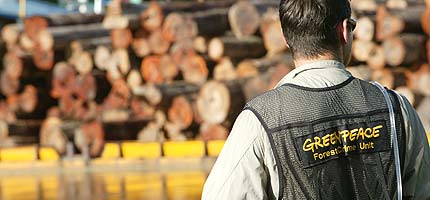
Ancient forests around the world are at risk from a range of man-made threats including destructive and illegal logging, agriculture and climate change. Unchecked, these will destroy the last remaining forests, possibly within our lifetimes. But there are ways we can avert the crisis and preserve what remains of these fragile landscapes.
Protected areas
With only 8 per cent of the world's ancient forests currently under strict protection, huge areas are still at risk from destructive logging. So a global network of protected areas needs to be established to preserve the remaining intact ancient forest areas and the biodiversity they support. This won't happen overnight, so in the interim we need moratoria on all new industrial logging in these areas for either timber or agriculture while conservation plans are developed.
But creating protected areas won't happen without money in place to fund them. We need to make sure that when reserves are established, mechanisms for financing forest management and policing are in place which will prevent the logging companies from carrying on with business as usual.
Government action
Only governments can provide the legislation needed to establish protected areas, so we have to convince them that they need to take action. They also have the power to eliminate the trade in illegal and destructively-logged timber entering the UK and Europe by introducing legislation to stop illegal timber imports. Closing the markets for this kind of wood will send a clear signal to logging companies that their practices need to change before it's too late.
Changing industry practices
Companies and industry also have a significant role to play in forest protection and management. By using only timber and paper that comes from environmentally responsible and socially just forest management, they can have a huge impact on the rate of deforestation.
We've worked with a wide rage of businesses to make this happen, and a range of companies - from timber merchants to building contractors, book publishers to and paper manufacturers - are now taking action to ensure their businesses aren't contributing to the destruction of ancient forests. Unfortunately, many other companies continue to conduct business as usual.
This isn't just limited to businesses dealing directly in timber products. With agriculture being a major cause of deforestation, food manufacturers and retailers also need to make sure their soya or palm oil is not being grown in newly deforested areas.
Certification schemes
Where logging does take place it needs to be environmentally responsible and socially just so that biodiversity is maintained and the forest is allowed to regenerate. Whilst there are many certification schemes on the market which claim to manage forests responsibly, in our opinion it's only the Forest Stewardship Council which can guarantee that timber products come from well-managed sources. This means trees are harvested in compliance with local laws, the forests are managed to a high standard, and that the rights of the local communities are respected.
Of course, we aim to practice what we preach so in the UK office we have policies to reduce our consumption of wood and paper as much as possible, and ensure what is used is either recycled or FSC-certified.


